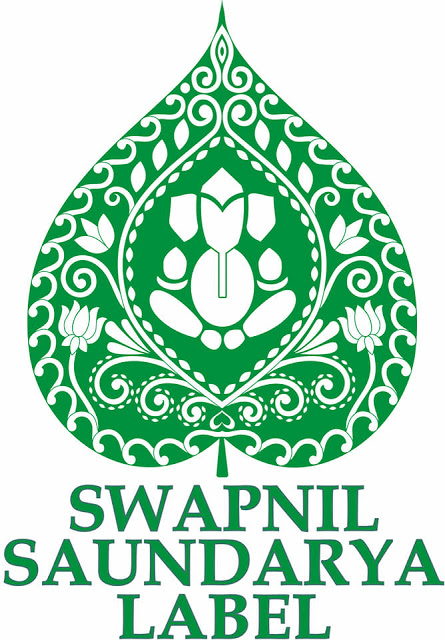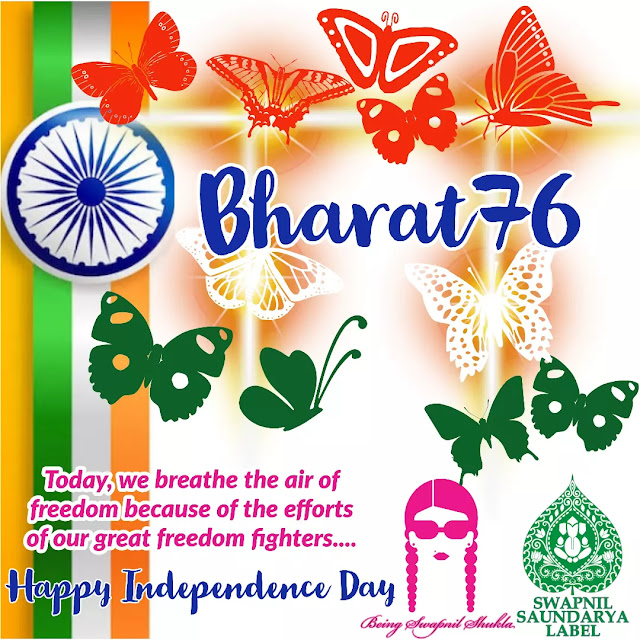Azadi Celebrations | India's numerous stories of inventions that made difference around the globe
SWAPNIL SAUNDARYA e-zine
Vol- 10, Year - 2022
Azadi Celebrations |
India's numerous stories of inventions that made difference around the globe
Published by
Aten Publishing House
'The Bold Brigade’, a collective to celebrate the Inclusive Power of Arts.
....
*********
On August 15, Monday, India marked 75 years of Independence. The country gained freedom from British colonial rule on August 15, 1947. As we gear up to celebrate the 76th Independence Day, it is crucial to remember the importance of this day, the history of our nation, and the sacrifices our freedom fighters made to gain freedom from the clutches of the British Empire.
India is witness to numerous stories of achievements and inventions that made difference around the globe. Our history as an independent nation is 75 years old but our civilisation is more than 5,000 years old. Many sources describe it as "Sa Prathama Sanskrati Vishvavara" — the first and the supreme culture in the world, according to the All World Gayatri Pariwar organization.
India has contributed to the fields of science and technology since ancient times. From the concept of zero to the decimal system, several discoveries were first made by India.
According to historians, the Indus Valley Civilization has revealed evidence of dentistry being practiced as far back as 7000 BC. One dig site in Mehrgarh even showed evidence of healers curing tooth disorders with bow drills.
The earliest existence of weighing scales also date back to between 2400 BC-1800 BC in the Indus valley civilization, where balances were used to compare measure and compare goods in trade.
We produced the first true steel, fusing iron with a high amount of carbon (1 to 1.6 per cent).
The sari can trace its origins back to Ancient India, but has changed with passing generations and new manufacturing techniques.
A traditional piece of clothing for men is the dhoti, an unstitched piece of cloth that is tied around the waist and legs. Men also wear a kurta, a loose shirt that is worn about knee-length.
The most well-known example of Indian architecture is the Taj Mahal, built by Mughal emperor Shah Jahan to honor his third wife, Mumtaz Mahal. It combines elements from Islamic, Persian, Ottoman Turkish and Indian architectural styles. India also has many ancient temples.
India's primary agricultural products are sugar cane, rice, wheat, buffalo milk, milk, potatoes, vegetables, bananas, maize, and mangoes.
Wheat, Basmati rice and pulses with chana (Bengal gram) are important staples of the Indian diet. The food is rich with curries and spices, including ginger, coriander, cardamom, turmeric, dried hot peppers, and cinnamon, among others. Chutneys — thick condiments and spreads made from assorted fruits and vegetables such as tamarind and tomatoes and mint, cilantro and other herbs — are used generously in Indian cooking.
We made significant advances in architecture (Taj Mahal), mathematics (the invention of zero) and medicine (Ayurveda) well in advance of many western civilizations.
Our ancient scriptures, the Vedas, Puranas, Tripitakas, the Ashtadhyaya, the Ramayana, and the Mahabharata have delved deeply into the causes of the existence of man. They have also tried to delineate how a man should live, work create and finally leave this mortal world.
We are the ones to come up with the principles of the decimal number system. The Arabic numerals can still be discovered on the rock edicts of Ashoka. The place value, Algebra, Algorithm, and Geometry all made their way into the world of Mathematics from India.
The world cannot overrule the importance of zero. It was discovered by the famous Indian Astronomer Aryabhatta.
The concept of the solar system, the earth’s circumference, eclipse occurrences, and many others are the outcome of India’s wisdom.
India gave the world its first university - Takshashila University
Dravida, the residents of Indus Valley, and the Aryans developed their own civilizations. The buildings, temples, and urban layouts of these civilizations can be seen even today. The archaeological remains at Harappa, Mohanjodaro, Kalibhangan, Dwarka (below the surface of the sea). Lothal and many places of Southern Indian prove that our ancestors were builders, architects, and planners of the highest order.
In Charaka Samhita, we can read the types of medicines and other pathological processes in vogue in those times. Bhaskar, a famous mathematician, lived in India during the second century BC. His principles and philosophies are valid even today. Ayurveda, the trusted medical science developed by the rishis and sages of those times is thriving even today. Ayurvedic medicines are exported from India to the entire world.
The game of Chess originated in India.
Ornamental buttons made from seashell were used in the Indus Valley Civilization by 2000 BCE. Some buttons were carved into geometric shapes and had holes pierced into them.
Snakes and Ladders was inspired from an Indian game called Mokshapat.
Sanskrit is the mother of all the European languages.
The art of Navigation was born in the river Sindh 6000 years ago. The very word Navigation is derived from the Sanskrit word NAVGATIH. The word navy is also derived from Sanskrit ‘Nou’.
India taught the world to cultivate Jute.
The game of carrom originated in India.
Ludo/Pachisi originated in India by the 6th century. The earliest evidence of this game in India is the depiction of boards on the caves of Ajanta. A variant of this game, called Ludo, made its way to England during the British Raj.
India invented card game called Suits. Kridapatram , which also means "painted rags for playing" is an early suits game, made of painted rags. It was invented in Ancient India.
The technology of cutting and polishing diamonds was invented in India, Ratnapariksha, a text dated to 6th century talks about diamond cutting and Al-Beruni speaks about the method of using lead plate for diamond polishing in the 11th century CE.
The world's first iron pillar was the Iron pillar of Delhi—erected at the time of Chandragupta II Vikramaditya (375–413).
Yoga as a physical, mental, and spiritual practice originated in ancient India.
Magical Indian Math discovery: Numbers 495 and 6174. The Indian mathematician Dattaraya Ramchandra Kaprekar discovered the number 6174 is reached after repeatedly subtracting the smallest number from the largest number that can be formed from any four digits not all the same. The number 495 is similarly reached for three digits number.
Sushruta is the father of surgery. 2600 years ago he and health scientists of his time conducted complicated surgeries like cesareans, cataract, artificial limbs, fractures, urinary stones and even plastic surgery and brain surgery. Usage of anesthesia was well known in ancient India. Over 125 surgical equipment were used. Deep knowledge of anatomy, physiology, etiology, embryology, digestion, metabolism, genetics and immunity is also found in many texts.
The value of “pi” was first calculated by Budhayana, and he explained the concept of what is known as the Pythagorean Theorem. He discovered this in the 6th century long before the European mathematicians.
And the list goes on.......
So many reasons to be proud!
Happy Independence Day, Bharat!
•••••••

Make your Life just like your Dream World !
copyright©2013-Present. Rishabh Shukla. All rights reserved
No part of this publication may be reproduced , stored in a retrieval system or transmitted , in any form or by any means, electronic, mechanical, photocopying, recording or otherwise, without the prior permission of the copyright owner.
Copyright infringement is never intended, if I published some of your work, and you feel I didn't credited properly, or you want me to remove it, please let me know and I'll do it immediately.



.jpeg)



Comments
Post a Comment